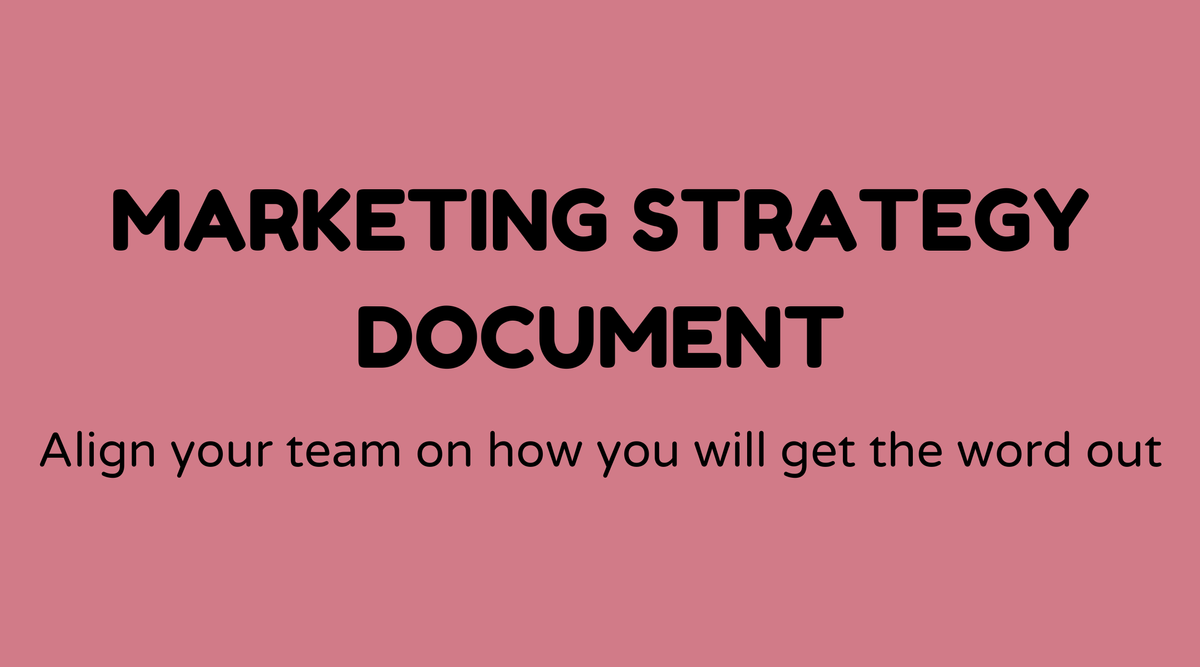Marketing strategy document

Overview of Marketing Strategy Document:
A Marketing Strategy Document serves as your guide to business success. It outlines the framework for achieving your marketing goals and assists your team in executing impactful campaigns. This document is essential for ensuring that all marketing efforts align with the company’s primary objectives. It includes various components such as target audience analysis, competitor assessment, branding, communication strategies, and financial projections.
Why Marketing Strategy Document Matters:
Recognizing the value of a Marketing Strategy Document is vital. It acts as a guide that steers your marketing efforts toward defined goals. With a well-structured plan in place, companies can allocate resources more effectively, streamline their messaging, and better prepare for upcoming challenges. It also promotes team collaboration by establishing a clear framework for roles and responsibilities. This thorough strategy not only supports customer engagement but also strengthens your competitive position, as highlighted by Forbes source.
What is a Marketing Strategy Document:
A Marketing Strategy Document presents an extensive plan outlining how a business intends to position its products or services in the marketplace. It encompasses various aspects such as identifying the target audience, analyzing the competitive environment, outlining clear marketing objectives, and specifying tactics and channels to utilize. It also includes budgeting, performance measurement criteria, and timelines to achieve those objectives. Think of it as a tactical plan that combines both creative and analytical insights to advance the business.
How to Create a Marketing Strategy Document:
Crafting a Marketing Strategy Document might seem overwhelming, but dividing it into straightforward, actionable steps can simplify the process. Begin with research—immerse yourself in understanding your target market, competitors, and existing trends. Next, define your marketing goals—ensure they are Specific, Measurable, Achievable, Relevant, and Time-bound (SMART). After that, develop your Unique Selling Proposition (USP) and branding strategy—this is essential for distinguishing yourself in the market.
Once the core elements are set, identify the channels and tactics to engage your audience—whether through digital platforms, traditional methods, or a combination. Alongside this, establish a timeline and a budget to guide your initiatives. Lastly, always incorporate a feedback mechanism and metrics to assess success. For a detailed guide, you can explore HubSpot's insights source.
Examples of Marketing Strategy Document:
To illustrate, here are some real-world examples:
-
Coca-Cola: Recognized for their campaigns, Coca-Cola’s strategy focuses on personalizing brand experiences around emotions and global events, utilizing their branding archetype while maintaining a robust digital presence.
-
Apple: Concentrates on building a strong brand identity and customer loyalty through continuous innovation and high-quality products. Their marketing strategy document likely incorporates the integration of advanced technology with minimalist design.
-
Nike: Their strategy centers on motivating athletes with impactful storytelling and emotional branding. They harness the influence of athletes and personalities to convey their message, as demonstrated by Nike's campaign strategy source.
FAQs:
How long should a marketing strategy document be?
A marketing strategy document does not have a predetermined length, but it should be detailed enough to cover all essential strategies and objectives while remaining concise enough for practical use.
Is a marketing strategy different from a marketing plan?
Yes. A marketing strategy outlines what needs to be accomplished, while a marketing plan describes how to reach those goals.
Can a small business benefit from a marketing strategy document?
Certainly! It provides guidance for marketing efforts, helping small businesses maximize their limited resources efficiently.
How frequently should I update my marketing strategy document?
Regularly review your document to ensure it remains aligned with current trends and business goals. Generally, doing this twice a year is advisable.
What are the key components of a marketing strategy document?
Key components include market research, target audience identification, competitive analysis, branding, marketing goals, tactics, budget, and performance indicators.
Where can I find templates for a marketing strategy document?
Websites such as HubSpot and Canva offer templates that can be tailored to different industries.



